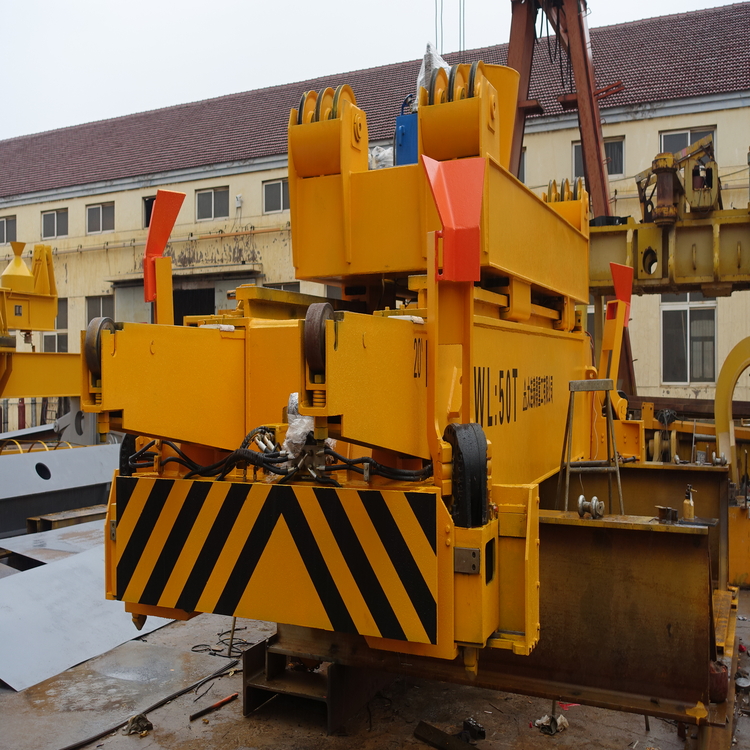
In an era marked by rapid automation and smart technology integration, the logistics industry is undergoing transformative change. Container lifting equipment, traditionally viewed as mere mechanical aids, now stands at the forefront of this evolution. Our company’s intelligent container lifting solutions exemplify how durable construction and advanced design converge to meet the complex demands of ports, warehouses, and rail transport hubs worldwide.
By leveraging high-strength steel frameworks paired with rotational cranes and telescoping beams, these devices provide agile handling across diverse container sizes while maintaining stringent safety through precise locking mechanisms. This synchronization of strength, flexibility, and safety not only accelerates loading and unloading operations but also aligns seamlessly with intelligent logistics initiatives aimed at maximizing throughput and minimizing operational risks.
Our container lifting equipment is engineered using high-grade steel alloys, offering exceptional resistance to wear and deformation. This robust foundation ensures operational longevity even under harsh conditions common in maritime and intermodal logistics environments. The integration of rotational cranes allows 360-degree maneuverability, while telescoping beams adjust dynamically to container dimensions ranging from standard 20-foot to oversized 45-foot units.
| Feature | Description | Benefit |
|---|---|---|
| High-Strength Steel Frame | Heat-treated and corrosion-resistant alloys | Enhanced durability & reduced maintenance costs |
| Rotational Crane | 360-degree load rotation capability | Improved positioning for precise container handling |
| Telescoping Beam System | Adjustable beam length to accommodate diverse container sizes | Operational flexibility across varying cargo specs |
| Precision Locking Mechanism | Automated locking/unlocking system with safety interlocks | Mitigates operator error, improves onsite safety |
Logistics managers across sectors report quantifiable improvements after adopting our container lifting equipment. At a leading global port, operational throughput increased by 25%, directly reducing vessel turnaround times and storage congestion. Meanwhile, safety incident reports related to loading mishaps fell by 40%, attributable to the standardized intelligent control systems and enforced safety protocols integrated within each unit.
In railway freight terminals, the equipment’s versatility has enabled seamless container transshipment between modes, slashing manual intervention by 60% and elevating workflow consistency. Warehouse managers benefit from precise lifting aligned with automated inventory management systems, thereby optimizing stacking density and reducing damage claims by 15%.

Mastery of intelligent container lifting devices begins with adherence to streamlined operation procedures designed with safety as a core focus. Operators are guided through digital interfaces facilitating real-time load assessments and automated beam adjustments, minimizing human error. Every lift cycle initiates with a system check confirming secure locking before hoisting commences.
Risk management protocols emphasize pre-operation inspection of structural elements and emergency override drills. Regular calibration of sensors and periodic system diagnostics ensure ongoing reliability. Our training modules, tailored for frontline operators and supervisory staff alike, focus on both technical proficiency and situational awareness, promoting a culture of safety and operational excellence.

Beyond individual applications, container lifting solutions integrate within broader intelligent logistics frameworks, supporting digital twins, IoT-enabled asset tracking, and predictive maintenance analytics. This holistic adaptability extends value to cargo owners, freight forwarders, and warehouse operators by enabling transparent supply chain visibility and responsive decision-making.
Forward-thinking enterprises recognize that investing in smart lifting technology is an investment in resilience and scalability amidst evolving market demands—whether accommodating surges in e-commerce shipments or meeting stringent environmental regulations through optimized equipment cycles.


